#expEDITions
Explore tagged Tumblr posts
Text

This oil painting depicts a dramatic scene of an exploration sailing ship trapped in ice, likely during an Arctic or Antarctic expedition, by J.O. Bull, 19th century
385 notes
·
View notes
Photo

Present-Day U.S. Counties Traversed During Lewis & Clark Expedition (1804-1806)
94 notes
·
View notes
Text

Should have bought life insurance
#Should have bought life insurance#oceangate#fuck ceos#ceos#ceo#congressman#bribery#coast guard#titanic#titan#expeditions#ausgov#politas#auspol#tasgov#taspol#australia#fuck neoliberals#neoliberal capitalism#anthony albanese#albanese government
18 notes
·
View notes
Text

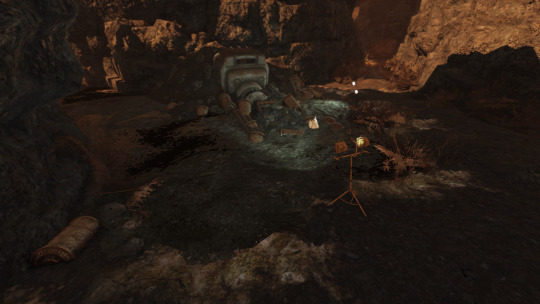

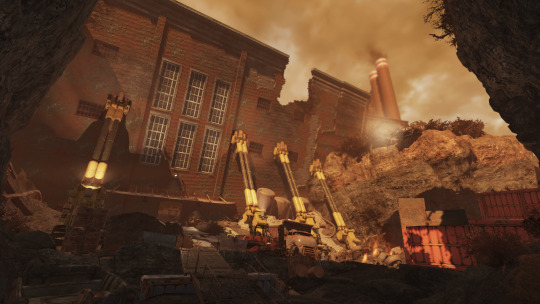

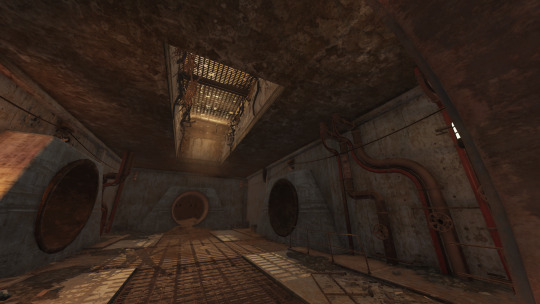
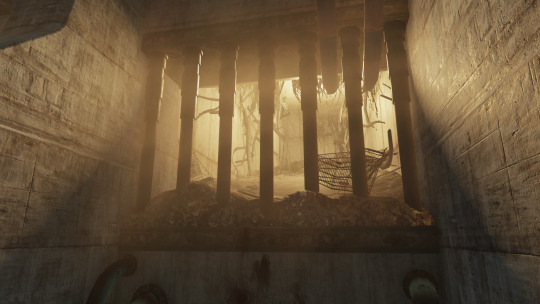
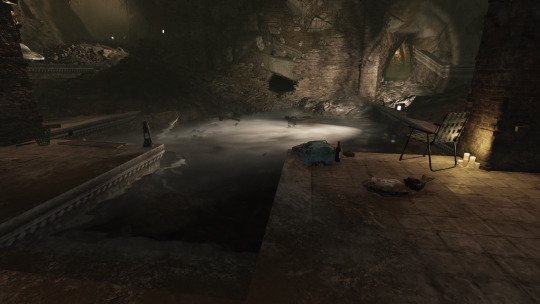

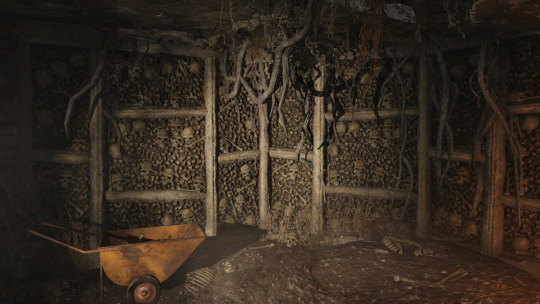


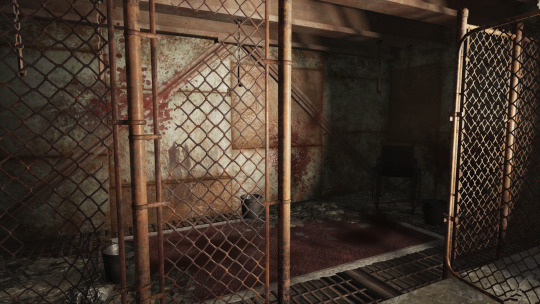
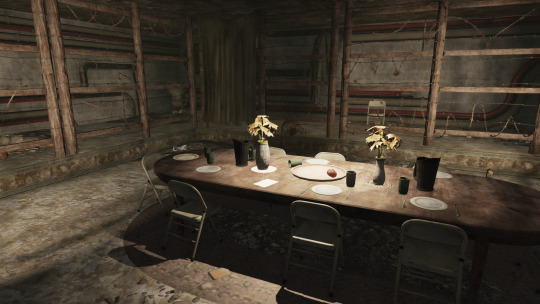

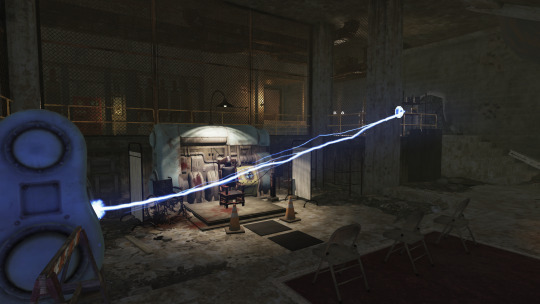

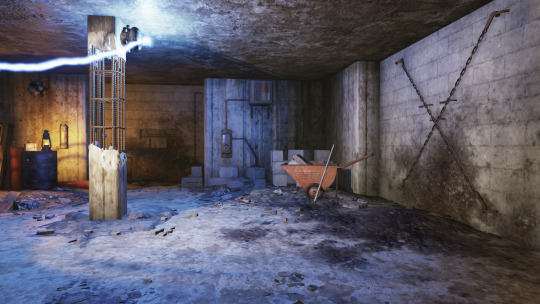
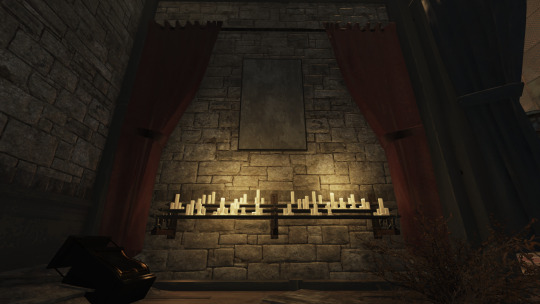
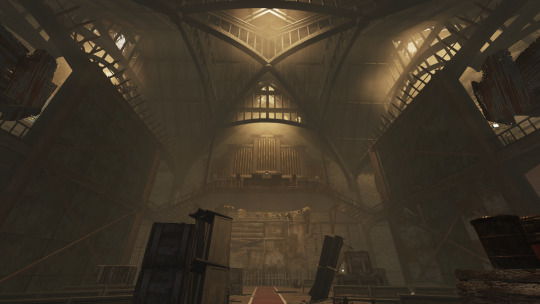


Fallout 76, Expeditions: Ashes to Fire
145 notes
·
View notes
Text

(three days after a very close call extraction at Alcatraz)
Roger Cadoret: Ey champion, you ready for another adventure? I know another place we can raid for supplies. Isabel: Let me ask Rush Roger Cadoret: ... But you're the captain- Isabel: He said no

#she really went 'dad said no😞'#perfect excuse😂#no cuz they almost died#so why do it again#oh i forgot#roger is crazy#far cry new dawn#thomas rush#roger cadoret#expeditions#fcnd
10 notes
·
View notes
Text

Herbert George Ponting
There is various and conflicting information about this image:
Sotheby’s: A dog team resting by an iceberg, 1912
flopetersgallery: Under the lee of the Castle Berg, 1911.
art.com: Dog team resting during the Terra Nova Expedition, 1910
42 notes
·
View notes
Text








Been having fun the last couple of days working my way through the "Beachhead" expedition in No Man's Sky, which they put out for a two week re-run starting on N7 day, as its end reward is the SSV Normandy SR1 as a frigate to accompany your freighter and run frigate expeditions (not the same as the special event player quest expeditions - these are daily exploration/combat/trading/manufacturing missions that up to five groups of 1-5 frigates each can be sent on; they return at the end of the mission with currency and items, and sometimes acquire damage you need to repair).
The expedition started me out on a freighter with a starship - in this case a shuttle - to fly around in. I was playing from an established save game, so once I'd repaired my freighter and warped to a new star system I was able to summon the anomaly and 'purchase' my preferred multitool and the starship I'm currently working on fixing up with cargo space and technology augments (a turquoise and blue squid ship).
Ended up doing a little base building, one of the expedition stages involved catching 5 uncommon fish on an ice world (clearly a stage added since the original run of "Beachhead", as they only just added fishing recently). I like having a little shelter where I'm able to be in out of the weather but can cast through an archway into the water to fish, so I started off building a fairly simple little structure hanging off the edge of an elevated island. Later, when I was waiting out a stage that requires running 3 frigate expeditions, I started working further on it.
While I was there adding on to it another player showed up and made use of the base to also fish, which was nice to see (the guy standing on the path holding a spiky red staff weapon). They weren't the only visitor, either. Always nice to encounter other players in game, though they're pretty rare to trip across apart from locations and/or events that concentrate players within specific areas (the game has an ungodly number of worlds to explore: 2 to the 64, or 18.4 quintillion planets spread across 250+ galaxies).
Still waiting on my third frigate expedition to finish (about an hour to go) but I've finished everything else in Beachhead -including claiming my Normandy frigate - and will be able to close it out after that and return my character (and their improved starship) to my regular save.
3 notes
·
View notes
Text

https://nationalpost.com/news/canada/theyre-not-human-how-19th-century-inuit-coped-with-a-real-life-invasion-of-the-walking-dead
Indigenous groups across the Americas had all encountered Europeans differently. But where other coastal groups such as the Haida or the Mi’kmaq had met white men who were well-fed and well-dressed, the Inuit frequently encountered their future colonizers as small parties on the edge of death.
“I’m sure it terrified people,” said Eber, 91, speaking to the National Post by phone from her Toronto home.
And it’s why, as many as six generations after the events of the Franklin Expedition, Eber was meeting Inuit still raised on stories of the two giant ships that came to the Arctic and discharged columns of death onto the ice.
Inuit nomads had come across streams of men that “didn’t seem to be right.” Maddened by scurvy, botulism or desperation, they were raving in a language the Inuit couldn’t understand. In one case, hunters came across two Franklin Expedition survivors who had been sleeping for days in the hollowed-out corpses of seals.
“They were unrecognizable they were so dirty,” Lena Kingmiatook, a resident of Taloyoak, told Eber.
Mark Tootiak, a stepson of Nicholas Qayutinuaq, related a story to Eber of a group of Inuit who had an early encounter with a small and “hairy” group of Franklin Expedition men evacuating south.
“Later … these Inuit heard that people had seen more white people, a lot more white people, dying,” he said. “They were seen carrying human meat.”
Even Eber’s translator, the late Tommy Anguttitauruq, recounted a goose hunting trip in which he had stumbled upon a Franklin Expedition skeleton still carrying a clay pipe.
By 1850, coves and beaches around King William Island were littered with the disturbing remnants of their advance: Scraps of clothing and camps still littered with their dead occupants. Decades later, researchers would confirm the Inuit accounts of cannibalism when they found bleached human bones with their flesh hacked clean.
“I’ve never in all my life seen any kind of spirit — I’ve heard the sounds they make, but I’ve never seen them with my own eyes,” said the old man who had gone out to investigate the Franklin survivors who had straggled into his camp that day on King William Island.
The figures’ skin was cold but it was not “cold as a fish,” concluded the man. Therefore, he reasoned, they were probably alive.
“They were beings but not Inuit,” he said, according to the account by shaman Nicholas Qayutinuaq.
The figures were too weak to be dangerous, so Inuit women tried to comfort the strangers by inviting them into their igloo.
But close contact only increased their alienness: The men were timid, untalkative and — despite their obvious starvation — they refused to eat.
The men spit out pieces of cooked seal offered to them. They rejected offers of soup. They grabbed jealous hold of their belongings when the Inuit offered to trade.
When the Inuit men returned to the camp from their hunt, they constructed an igloo for the strangers, built them a fire and even outfitted the shelter with three whole seals.
Then, after the white men had gone to sleep, the Inuit quickly packed up their belongings and fled by moonlight.
Whether the pale-skinned visitors were qallunaat or “Indians” — the group determined that staying too long around these “strange people” with iron knives could get them all killed.
“That night they got all their belongings together and took off towards the southwest,” Qayutinuaq told Dorothy Eber.
But the true horror of the encounter wouldn’t be revealed until several months later.
The Inuit had left in such a hurry that they had abandoned several belongings. When a small party went back to the camp to retrieve them, they found an igloo filled with corpses.
The seals were untouched. Instead, the men had eaten each other.
#being so English you die of racism#because youd rather eat each other than a seal#or try to signal to the friendly locals that you need help#many such cases#UNIRONICALLY#the terror#the franklin expedition#dorothy eber#then they infected all these people with European disease of course#the national post is a chud rag so this is an unexpectedly good article for them
57K notes
·
View notes
Text
#alleopole.pl#ogłoszenia#sklep z używanymi grami opole#sklep z używanymi#sprzedamgry.pl#gra#ps5#Expeditions A MudRunner Game#Expeditions#MudRunner#Game
1 note
·
View note
Text
youtube
#Worldtravelawards#Kili#Kiliclimb#ClimbingKilimanjaro#Expeditions#camping#Serengeti#Serengetiwildebeest#adventure#wildebeestmigration#Zanzibarbeach#Youtube
0 notes
Text
Conquer Mount Thalay Sagar with Kahlur Adventures
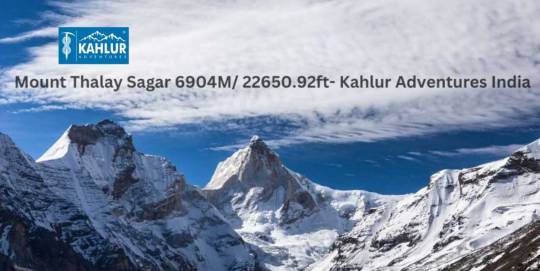
Mount Thalay Sagar stands as one of the most striking and challenging peaks in the Garhwal Himalayas, Uttarakhand. Rising to an impressive height of 6,904 meters (22,651 feet), this towering giant is known for its steep rock faces and technical difficulty, making it a coveted destination for experienced climbers worldwide. Mount Thalay Sagar Peak is not just a climb; it’s an expedition that tests the limits of human endurance, skill, and determination.
The Allure of Mount Thalay Sagar
Situated near the holy town of Gangotri, Mount Thalay Sagar is part of the Gangotri group of peaks. The mountain is revered for its sheer vertical rock faces and sharp summit, which pose a formidable challenge even for seasoned mountaineers. Climbing Mount Thalay Sagar requires advanced technical skills, making it an expedition only for those with significant mountaineering experience.
The journey to the Mount Thalay Sagar Peak is as mesmerizing as it is arduous. Trekkers are treated to breathtaking views of the Gangotri glacier, the sacred Bhagirathi River, and a panorama of towering Himalayan peaks. The trek takes you through remote valleys, lush meadows, and rugged terrain, leading up to the pristine Kedar Tal, a high-altitude lake that serves as the base camp for the climb.
Kahlur Adventures: Your Partner for the Mount Thalay Sagar Expedition
At Kahlur Adventures, we understand the demands of high-altitude climbing and are committed to providing a safe and rewarding experience for our trekkers. Our Mount Thalay Sagar trek is meticulously planned to ensure that every aspect of the journey is covered, from acclimatization to technical support. With a team of experienced guides and Sherpas, we offer the expertise required to conquer this challenging peak.
The Mount Thalay Sagar trek cost is ₹3,45,000, which covers all essential services, including transportation, accommodation, meals, permits, and expert guidance. This comprehensive package ensures that you can focus on the climb, knowing that all logistical details are handled by professionals.
Kahlur Adventures Short Itinerary
Below is a short itinerary for the Mount Thalay Sagar trek provided by Kahlur Adventures:
Day 01: Arrive Delhi | Elevation: 300M
Arrive in Delhi and meet your team members, preparing for the epic journey ahead.
Day 02: Delhi to Rishikesh | Distance: 270 kms | Duration: 6 – 7 hours | Elevation: 340M
A scenic drive to Rishikesh, a town on the banks of the Ganges, renowned for its spiritual significance and serene environment.
Day 03: Rishikesh to Uttarkashi | Distance: 172 kms | Duration: 5 – 6 hours | Elevation: 1158M
Continue your journey to Uttarkashi, a gateway to the Gangotri region and a hub for mountaineering expeditions.
Day 04: Uttarkashi to Gangotri | Distance: 102 kms | Duration: 3-4 hours | Elevation: 3415M
Travel to Gangotri, the starting point of the trek, where you will visit the famous Gangotri temple before setting off on your adventure.
Day 05: Gangotri to Bhoj Kharak | Trek Distance: 08 km | Duration: 4-5 hours | Elevation: 3780M
Begin your trek with a gradual ascent through dense forests, leading to Bhoj Kharak, your first campsite.
Day 06: Bhoj Kharak to Kedar Kharak | Distance: 07 km | Duration: 4-5 hours | Elevation: 4613M
Trek through rugged terrain and boulder fields to reach Kedar Kharak, where you will camp amidst stunning views.
Day 07: Kedar Kharak to Kedar Tal | Distance: 08 km | Duration: 4-5 hours | Elevation: 4913M
A challenging trek to Kedar Tal, a beautiful high-altitude lake that serves as the base camp for Mount Thalay Sagar.
Day 08: Kedar Tal (Rest Day)
Acclimatization day at Kedar Tal, allowing your body to adjust to the altitude before the climb.
Day 09 to Day 25: Summit Mount Thalay Sagar Peak (6,904 M)
Over the next 17 days, attempt the challenging ascent of Mount Thalay Sagar. This period includes establishing high camps, acclimatization, and the summit push. The climb is technical and demanding, but the reward is the unparalleled sense of achievement upon reaching the summit.
Day 26: Kedar Tal to Kedar Kharak
Begin the descent, retracing your steps to Kedar Kharak.
Day 27: Kedar Tal to Gangotri – Drive to Uttarkashi
Continue descending to Gangotri and then drive back to Uttarkashi, reflecting on the incredible journey.
Day 28: Uttarkashi to Rishikesh
Drive from Uttarkashi to Rishikesh, where you can relax and rejuvenate after the expedition.
Day 29: Rishikesh to Delhi, IMF De-Briefing
Return to Delhi for the expedition debriefing at the Indian Mountaineering Foundation (IMF).
Day 30: Departure from Delhi
Depart from Delhi, concluding your unforgettable expedition to Mount Thalay Sagar.
Why Choose the Mount Thalay Sagar Trek?
The Mount Thalay Sagar trek is more than just a climb; it's an experience that tests your physical and mental limits while rewarding you with some of the most stunning vistas in the Himalayas. Below are some reasons to go on this journey-
Technical Challenge: Mount Thalay Sagar is known for its steep rock faces and requires advanced climbing skills, making it ideal for experienced mountaineers.
Scenic Beauty: The trek offers breathtaking views of the Gangotri glacier, Kedar Tal, and other towering peaks of the Garhwal Himalayas.
Spiritual Experience: The trek begins in Gangotri, a place of immense religious significance, adding a spiritual dimension to your journey.
Comprehensive Support: With Kahlur Adventures, you’ll have access to expert guides, Sherpas, and all the necessary equipment, ensuring a safe and successful climb.
Exclusive Adventure: The Mount Thalay Sagar Peak is not as frequently climbed as other peaks in the region, offering a sense of exclusivity and solitude during the expedition.
Conclusion
The Mount Thalay Sagar trek is a journey that will push you to your limits and reward you with experiences that few have the privilege to enjoy. With Kahlur Adventures, you can embark on this challenging expedition with confidence, knowing that you are in capable hands. The Mount Thalay Sagar trek cost ₹3,45,000 is a small price to pay for the opportunity to conquer one of the most demanding peaks in the Himalayas.
Are you ready to take on the challenge of Mount Thalay Sagar? Join Kahlur Adventures for an expedition that promises to be the adventure of a lifetime.
0 notes
Text
A racing wheel fixes all these problems, allows players to give much more precise input and even receives force feedback that can elevate the immersion of the game. Here are eight racing titles that massively benefit from using a racing wheel.
#racing games#racing wheel#dirt rally#Expeditions#Expeditions a mudrunner game#Forza Horizon 5#BeamNG drive#F1 24#Euro Truck Simulator 2#Forza Motorsport#Assetto Corsa Competizione
0 notes
Photo

Viking expeditions in the first millennium.
260 notes
·
View notes
Text
What makes Arusha National Park a great Destination for Tanzania safari tour?

Travel Company: DAV Safaris
Website: www.davsafaris.com
Email:[email protected]
Tel: +256757795781 or +256701412430
Arusha National Park is a captivating destination for a Tanzania safari tour due to its stunning landscapes and rich biodiversity. Nestled at the foot of Mount Meru, the park features diverse ecosystems, including lush forests, open savannahs, and serene lakes. This variety allows visitors to experience a wide range of wildlife, including giraffes, zebras, and various primate species, making it a fantastic spot for both wildlife enthusiasts and photographers. The park is also less crowded than other national parks, offering a more intimate safari experience.

What wildlife can be seen during a Tanzania safari tour in Arusha National Park?
A Tanzania safari tour in Arusha National Park provides opportunities to view an array of wildlife. Key species include:
Giraffes: Often seen browsing on acacia trees, these tall and graceful animals are a highlight.
Wildebeests and Zebras: Frequently found grazing in herds, particularly in the Ngurdoto Crater area.
Colobus Monkeys: These striking black-and-white monkeys are a unique attraction, often seen in the forest canopy.
Buffalo and Elephants: While not as abundant as in other parks, you may still spot these impressive animals.
Birdlife: Arusha National Park is home to over 400 bird species, making it a birdwatcher's paradise. Look for the African Fish Eagle and various weavers.
What activities are available on a Tanzania safari tour in Arusha National Park?
A Tanzania safari tour in Arusha National Park offers a variety of activities that cater to different interests:
Game Drives: Explore the park's diverse habitats in a 4x4 vehicle, providing opportunities to see wildlife up close.
Guided Nature Walks: Experience the park on foot with knowledgeable guides who can share insights about the flora and fauna.
Bird watching: With its rich avian diversity, bird watching is a popular activity for enthusiasts and casual observers alike.
Canoeing: Enjoy a tranquil canoe ride on Momella Lake, where you can see hippos and various bird species from the water.
Cultural Visits: Engage with local communities to learn about their culture and traditions, enhancing your overall safari experience.
Is Arusha National Park suitable for families on a Tanzania safari tour?
Yes, Arusha National Park is suitable for families, making it a great destination for a Tanzania safari tour. The park offers a variety of activities that can be enjoyed by all ages, including:
Guided Nature Walks: Family-friendly walks allow children to learn about nature in a safe environment.
Game Drives: Exciting for children and adults alike, game drives provide opportunities to see wildlife from the safety of a vehicle.
Cultural Experiences: Engaging with local communities offers educational insights for the whole family.
What unique features does Arusha National Park offer compared to other Parks on a Tanzania safari tour?
Arusha National Park has several unique features that set it apart from other parks in Tanzania:
Diverse Ecosystems: The park's varied landscapes include montane forests, open savannas, and lakes, providing a rich tapestry of habitats.
Mount Meru: As the second-highest mountain in Tanzania, Mount Meru offers stunning views and opportunities for trekking.
Colobus Monkeys: The park is one of the best places to see these unique primates, which are often elusive in other regions.
How does a Tanzania safari tour to Arusha National Park complement other safari destinations?
A Tanzania safari tour to Arusha National Park can easily complement visits to other iconic destinations, such as the Serengeti or Ngorongoro Crater. Arusha serves as an excellent starting point for a broader safari itinerary, providing a diverse experience of Tanzania's wildlife and landscapes. After exploring Arusha, travelers can embark on more extensive adventures to witness the Great Migration in the Serengeti or the stunning vistas of the Ngorongoro Crater.
How do I get to Arusha National Park for a Tanzania safari tour?
Getting to Arusha National Park is relatively easy, making it a convenient destination for a Tanzania safari tour. The park is located about 30 kilometers (18 miles) from the town of Arusha, which serves as the main gateway for safaris in northern Tanzania.
By Road: Most visitors travel by road from Arusha, which takes approximately 1 hour. Many tour operators offer transfers as part of their safari packages.
By Air: For those on a tighter schedule, domestic flights from Dar es Salaam or Zanzibar to Arusha can be arranged, followed by a short drive to the park.
What Lodging options Are Available for a Tanzania safari tour in Arusha National Park?
When planning a Tanzania safari tour, accommodation options in and around Arusha National Park vary to suit different budgets and preferences:
Luxury Lodges: Several high-end lodges offer stunning views, exceptional service, and amenities like swimming pools and fine dining. Examples include Ngurdoto Mountain Lodge and Arusha Safari Lodge.
Mid-Range Hotels: Comfortable mid-range options include hotels with great service and easy access to the park.
Camping: For a more adventurous experience, camping within the park is available, allowing you to immerse yourself in nature.
What is the best time to visit Arusha National Park on a Tanzania safari tour?
The best time for a Tanzania safari tour in Arusha National Park is during the dry season, which typically runs from June to October. During this period, wildlife is easier to spot as animals congregate around water sources. The weather is generally dry and cooler, making it comfortable for outdoor activities.
June to October: This is peak safari season, offering excellent wildlife visibility and fewer mosquitoes.
November to May: Although the rainy season can make some areas muddy, this time offers lush landscapes and the arrival of migratory birds, making it a rewarding experience for birdwatchers.
What should I bring on a Tanzania safari tour to Arusha National Park?
Packing appropriately is essential for a successful Tanzania safari tour. Here are some items to consider:
Clothing: Light, breathable clothing in neutral colors to blend in with the environment. Layers are recommended for cooler mornings and evenings.
Footwear: Comfortable walking shoes for nature walks and sturdy sandals for relaxing at your lodge.
Binoculars and Camera: Essential for wildlife viewing and capturing stunning photographs.
Sun Protection: Sunscreen, sunglasses, and a wide-brimmed hat to protect against the sun.
Insect Repellent: Important for warding off mosquitoes, especially in the evenings.
#tanzania wildlife safaris#big fives safaris south africa#explore#discover#trip#tour#visir#go#vacations#expeditions#adventure
0 notes
Text

RICHARD EVELYN BYRD MY BELOVED?????
i really think gas leaks should be a niche horror subgenre like evil mold is. where are my evil carbon monoxide poisoning stories outside of reddit threads.
#love him#read Alone in freshman year and I still think about it constantly#that's the book that details the experience op references#carbon monoxide poisoning#Richard E. Byrd#arctic exploration#expeditions
1K notes
·
View notes